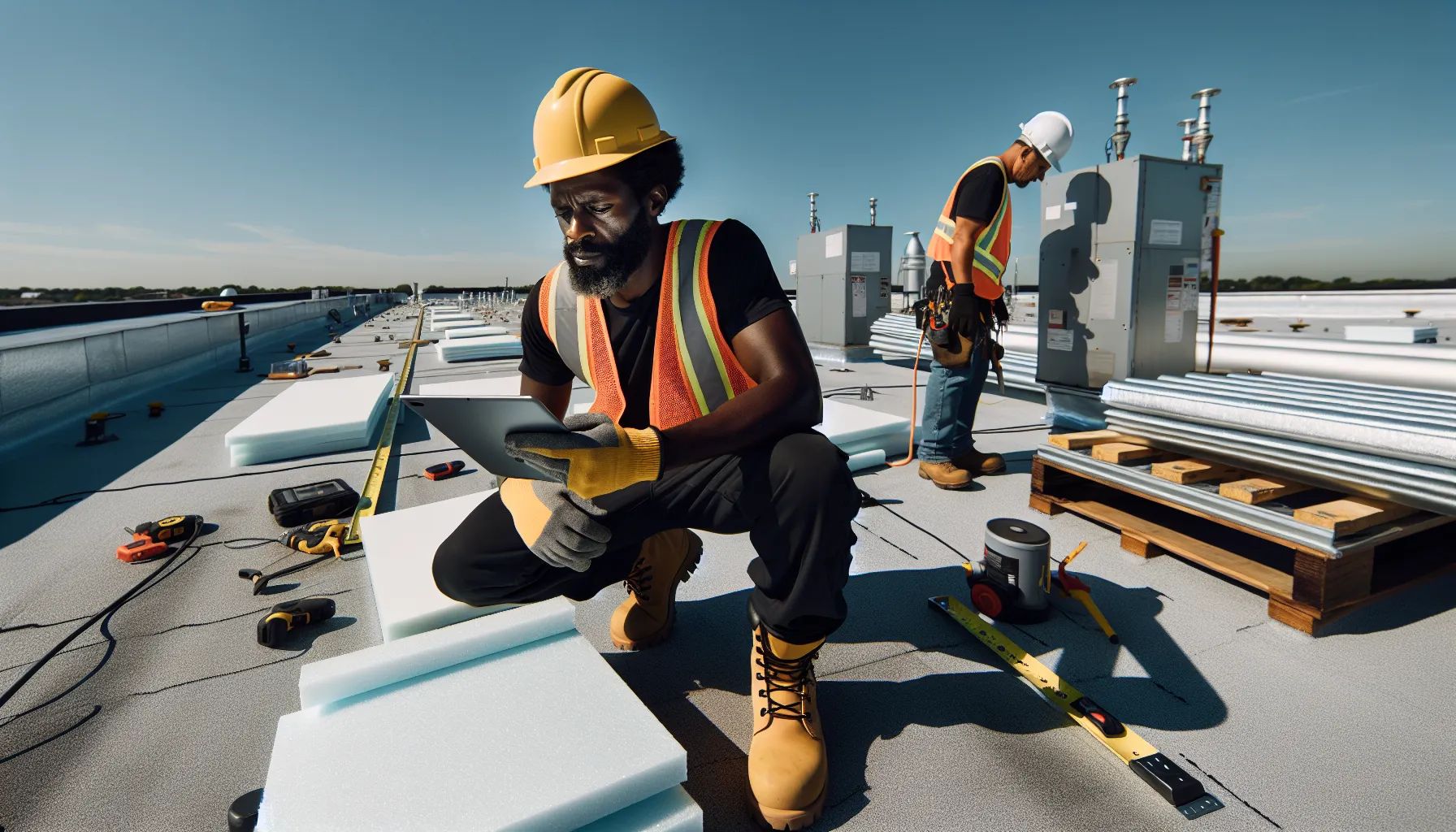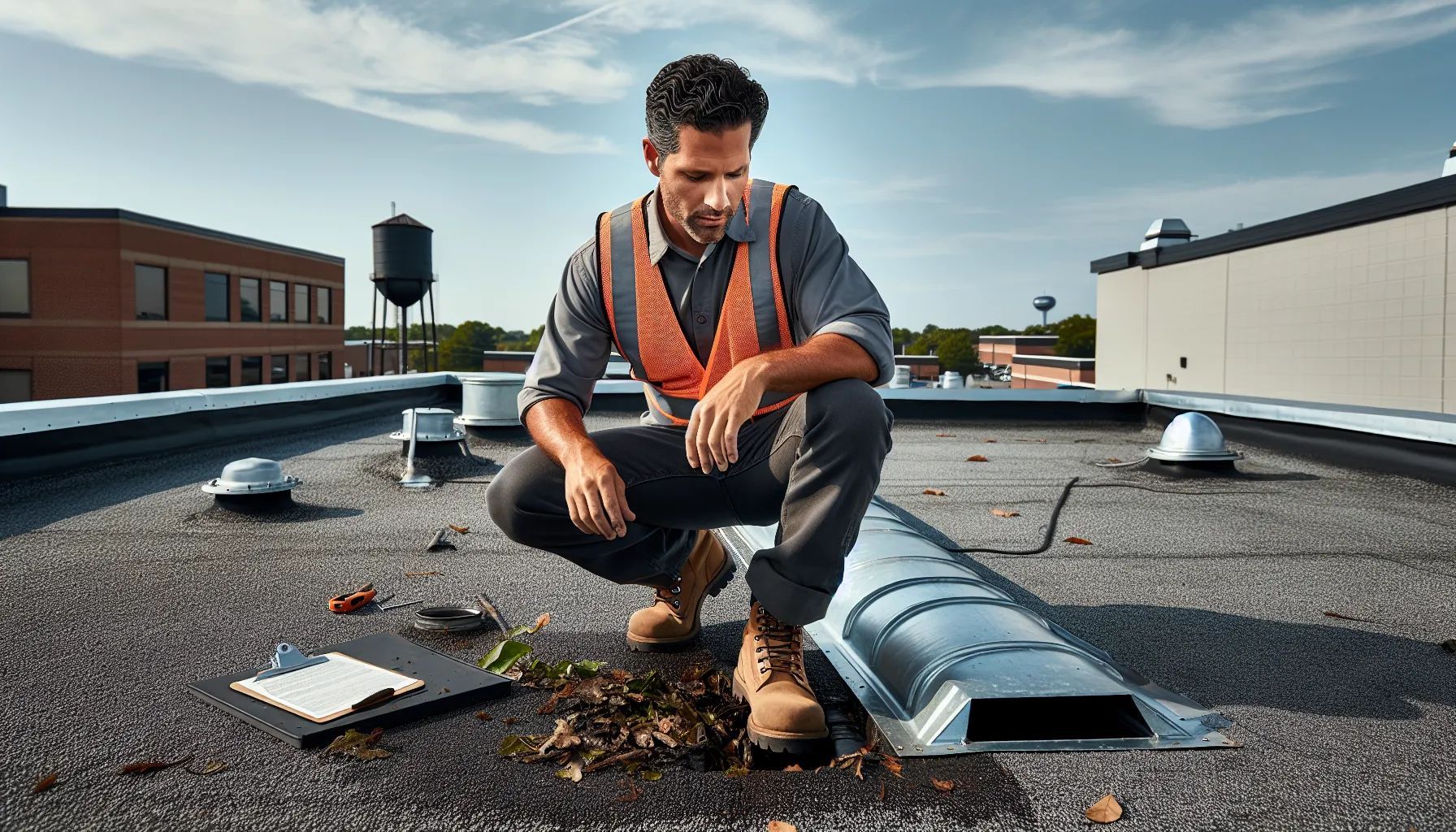When Hail Damages the Roof: Complete Guide to Inspection, Insurance Claims & Repair Options
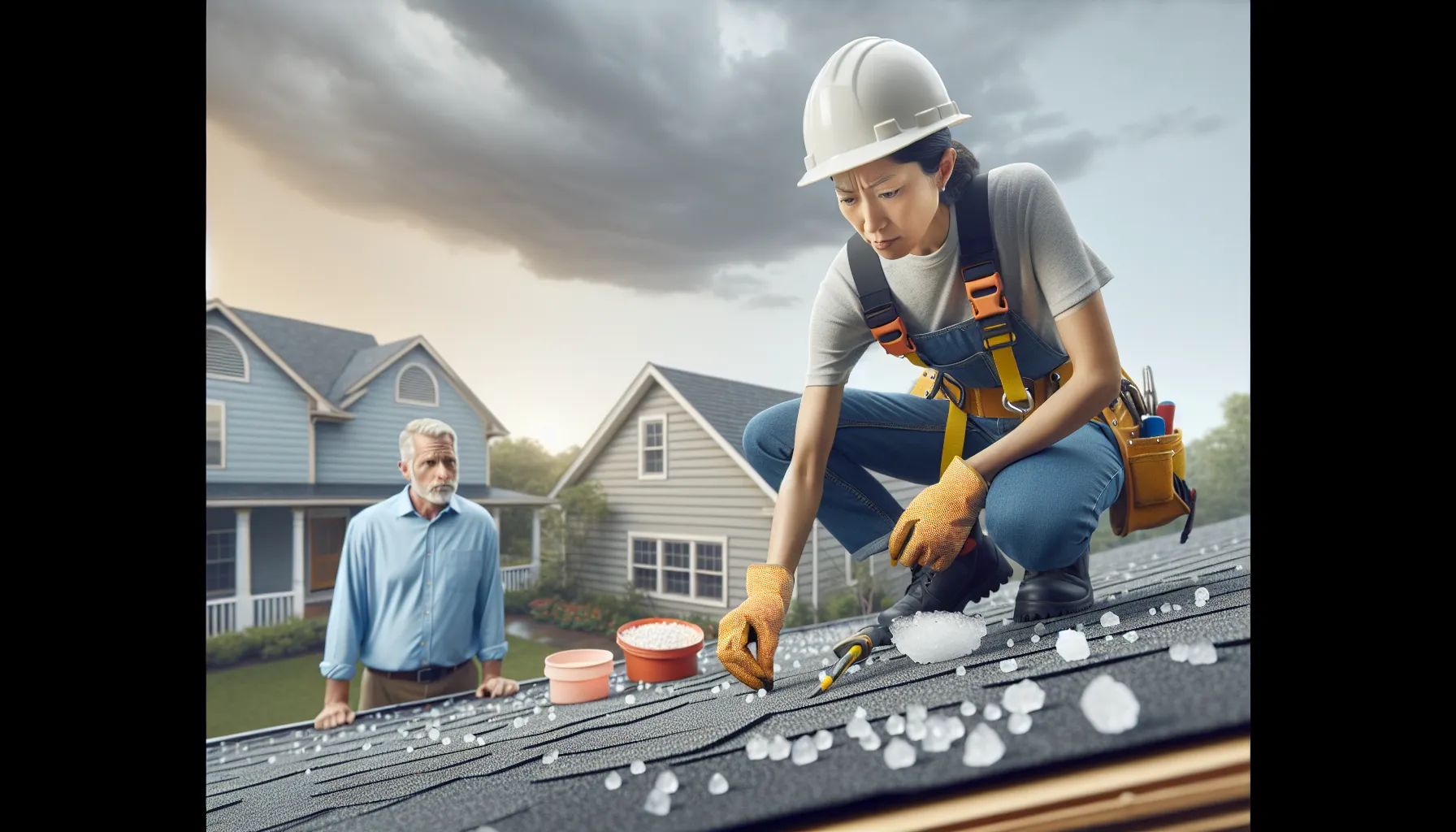
When severe weather strikes and leaves your home with hail damage roof problems you're facing more than just cosmetic issues. We've seen firsthand how these ice pellets can transform a perfectly good roof into a compromised barrier that threatens your home's integrity.
The aftermath of a hailstorm often reveals damage that's not immediately visible from the ground. From subtle dents and cracks to major punctures that compromise your roof's protective layers we'll explore the full spectrum of hail-related destruction. Understanding these impacts is crucial for protecting your investment and ensuring your family's safety.
Whether you're dealing with recent storm damage or wondering if past hail has affected your roof we'll guide you through everything you need to know. From identifying telltale signs to navigating insurance claims and repair options you'll discover the essential steps for addressing this common yet serious roofing challenge.
Signs of Hail Damage on Your Roof
Identifying hail damage requires careful inspection of specific roof components. We recognize these damage indicators help homeowners determine the extent of storm impact and plan necessary repairs.
Dents and Dings on Metal Components
Metal surfaces reveal hail impacts most clearly. We check gutters, downspouts, and flashing first because aluminum and steel show circular impressions from hailstones. Damage patterns vary based on hail size - pea-sized hail creates 0.25-inch dents while golf ball-sized hail leaves 1.75-inch impressions.
Air conditioning units display similar damage patterns. We examine the fins and housing for dents that match the storm's hail size reports. Vent pipes and chimney caps accumulate multiple strikes during severe storms. These metal components act as damage indicators for the entire roof system.
Garage doors and window frames provide additional evidence. We document all metal surface damage with photographs for insurance purposes. Matching dent sizes across multiple surfaces confirms hail as the damage source rather than other impacts.
Cracked or Missing Shingles
Asphalt shingles crack along impact points where hailstones strike. We identify fresh cracks by their sharp edges and exposed underlayment. Impact marks appear as dark spots on lighter shingles or light spots on darker shingles.
Missing shingles occur when hail breaks the seal between layers. We find these gaps most often along roof edges and valleys where wind combines with hail impact. Fresh breaks show clean edges without weathering or algae growth.
Clay and concrete tiles split differently than asphalt. We locate hairline cracks that expand over time, allowing water penetration. Tile fragments in gutters indicate recent hail damage. Corner breaks and edge chips compromise the tile's water-shedding ability.
Wood shingles split along the grain after hail impacts. We trace these splits from the impact point downward, measuring their length and depth. Multiple splits in adjacent shingles suggest widespread damage requiring section replacement.
Granule Loss and Exposed Mat
Granules protect shingles from UV rays and weather. We identify hail damage by circular areas where granules have been knocked loose, exposing the black asphalt mat underneath. Fresh granule loss feels smooth compared to the rough texture of undamaged areas.
Gutters collect displaced granules after hailstorms. We check downspouts for granule accumulation exceeding normal weathering amounts. A handful of granules indicates typical wear while cups full suggest hail damage.
Random granule loss patterns distinguish hail damage from normal aging. We map these bare spots across the roof surface, noting their size and distribution. Exposed mat areas measure 0.5 to 3 inches in diameter depending on hailstone size.
Accelerated aging follows granule loss. We monitor these areas for additional deterioration including cracking, curling, and complete mat exposure. Damaged shingles lose 5-7 years of life expectancy per significant hailstorm.
Types of Roofing Materials and Their Vulnerability to Hail
Accelerated aging follows granule loss. We monitor these areas for additional deterioration including cracking, curling, and complete mat exposure. Damaged shingles lose 5-7 years of life expectancy per significant hailstorm.
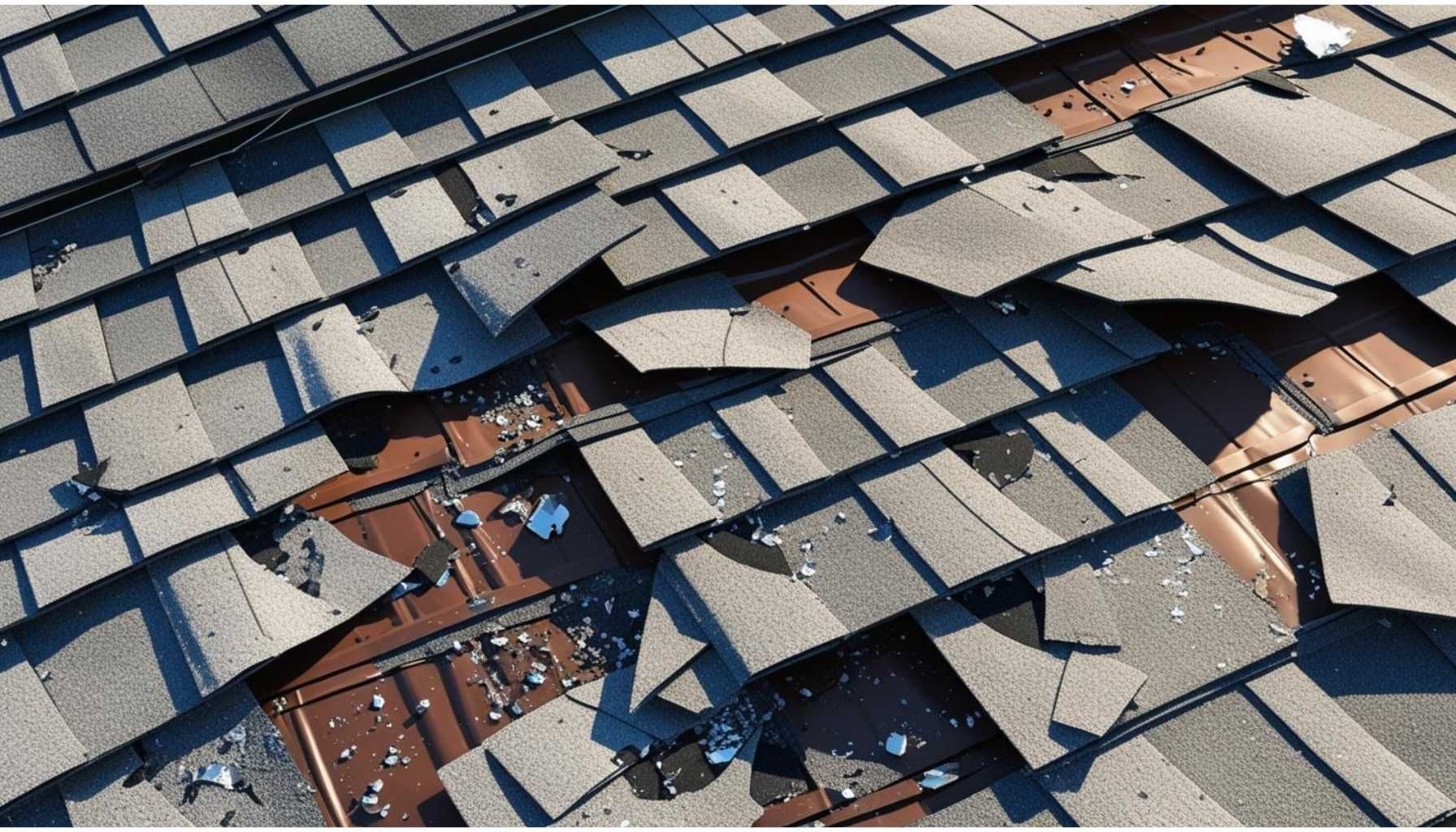
Different roofing materials respond uniquely to hail impact, with some offering superior protection while others sustain significant damage. Understanding these vulnerabilities helps homeowners make informed decisions about roof repairs and replacements after hail damage.
Asphalt Shingles
Asphalt shingles cover 80% of residential roofs across the United States. These popular materials face considerable risk during hailstorms as impacts chip and crack the shingle surface. Damaged shingles expose the underlying wood decking to moisture infiltration and eventual rot.
Standard asphalt shingles typically show impact marks from hailstones measuring 1 inch or larger in diameter. The damage appears as dark spots where protective granules dislodge from the asphalt mat. These exposed areas deteriorate rapidly under UV radiation and weather exposure.
Impact-resistant asphalt shingles provide enhanced protection against hail damage. Manufacturers design these specialized shingles with rubberized asphalt compounds that absorb impact energy. Class 3 and Class 4 rated shingles withstand impacts from 1.75-inch and 2-inch hailstones respectively.
Property owners in hail-prone regions benefit from upgrading to impact-resistant shingles during roof replacement. Insurance companies often provide premium discounts ranging from 5% to 30% for homes with impact-rated roofing materials.
Metal Roofing
Metal roofs demonstrate exceptional durability with lifespans exceeding 50 years under normal conditions. Steel, aluminum, and copper panels resist penetration from most hailstones encountered during typical storms. The material's strength prevents punctures that compromise water-shedding capabilities.
Large hailstones create visible dents on metal surfaces without penetrating the material. A 2-inch hailstone striking aluminum roofing produces a dent approximately 0.5 inches deep. These cosmetic imperfections rarely affect the roof's protective function initially.
Repeated hail impacts in the same area gradually weaken metal panels through work hardening. Dented areas develop stress concentrations that accelerate corrosion when protective coatings crack. Standing seam metal roofs experience less damage than exposed-fastener systems because raised seams deflect direct impacts.
Property owners appreciate metal roofing's resilience in regions experiencing frequent hailstorms. Insurance claim data shows metal roofs require replacement 75% less often than asphalt shingle roofs following severe hail events.
Tile and Slate Roofing
Natural slate roofing provides centuries of service when properly maintained. Hailstone impacts exploit existing weaknesses in slate tiles, particularly along natural cleavage planes. A 1.5-inch hailstone generates enough force to fracture weathered slate tiles measuring 0.25 inches thick.
Slate damage manifests as corner breaks, edge chips, and hairline cracks radiating from impact points. Water penetrates these openings during subsequent rainstorms, causing underlayment deterioration and deck damage. Freeze-thaw cycles widen existing cracks throughout winter months.
Synthetic slate and composite tiles offer superior hail resistance compared to natural materials. Manufacturers formulate these products using polymer resins reinforced with mineral fillers. Class 4 rated synthetic tiles withstand impacts from 2-inch hailstones traveling at terminal velocity.
Composite roof tiles combine aesthetic appeal with practical durability for hail-prone locations. Testing laboratories verify these materials meet impact resistance standards through controlled testing protocols. Homeowners installing Class 4 composite tiles reduce future hail damage repair costs by approximately 80% compared to traditional clay or concrete alternatives.
How to Inspect Your Roof for Hail Damage
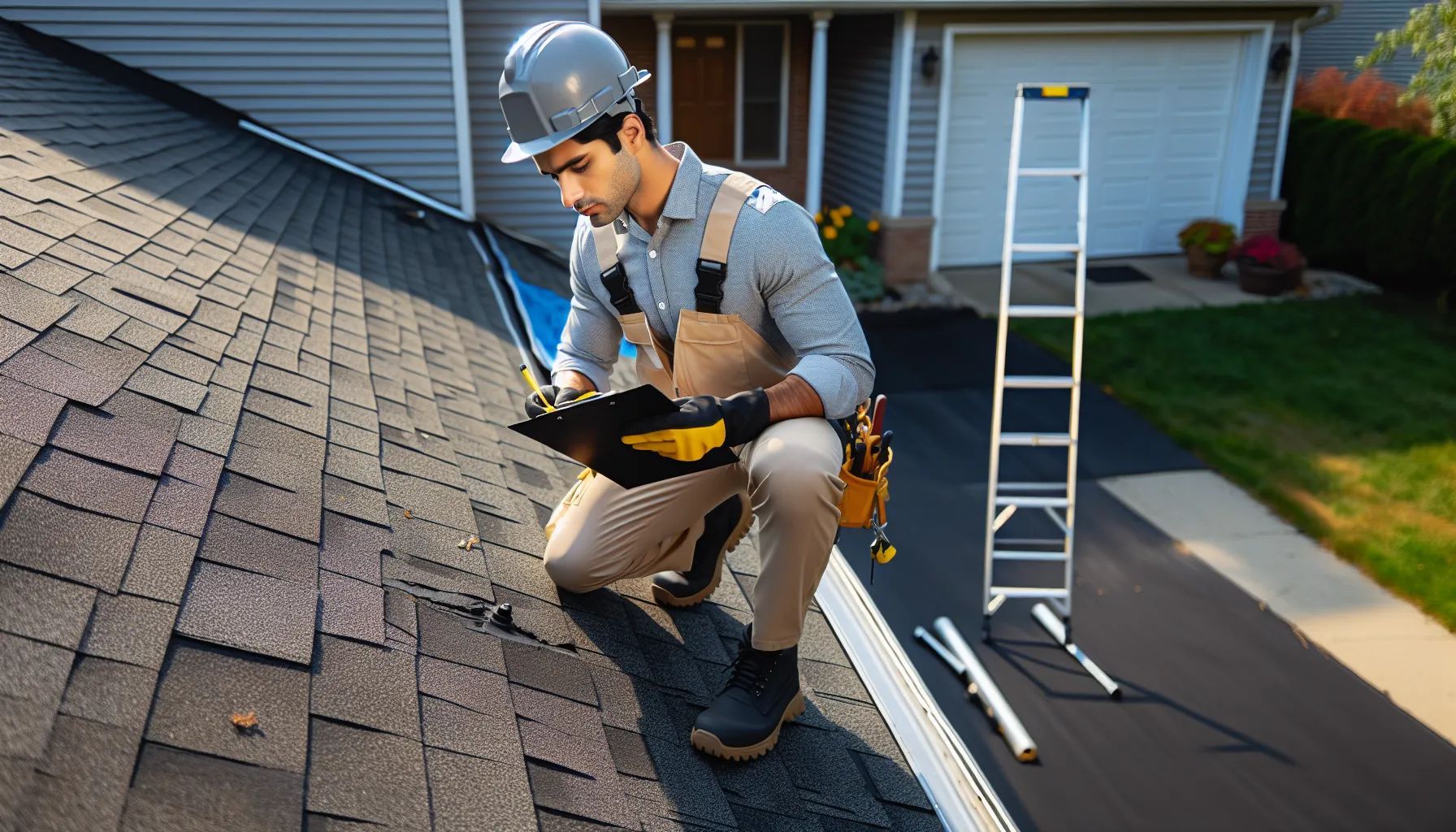
Proper roof inspection after a hailstorm protects your home from water damage and validates insurance claims. We'll guide you through safe inspection techniques and help you identify critical damage indicators.
Safety Precautions
Roof inspections require careful preparation and protective equipment. We recommend wearing a protective helmet, gloves, and non-slip shoes before starting any inspection. Weather conditions determine inspection safety - avoid climbing during rain, wind, or immediately after storms.
Ladder stability prevents 164,000 emergency room visits annually in the United States. Position your ladder on level ground and extend it 3 feet above the roof edge. Have someone hold the ladder base while you climb. Test each rung before putting your full weight on it.
Professional inspectors use safety harnesses when walking on slopes exceeding 4:12 pitch. Consider this equipment if your roof has steep sections. Walk only on dry surfaces and avoid stepping on damaged areas that might collapse.
Morning inspections provide optimal lighting and cooler temperatures. Schedule your inspection between 7 AM and 10 AM when shingles are less likely to tear under foot traffic. Mark your inspection date on your calendar to track damage progression over time.
What to Look For
Ground-level inspection reveals initial damage indicators without climbing risks. Check metal surfaces including gutters, downspouts, air conditioning units, and mailboxes for dents. These dents match hailstone sizes and indicate potential roof damage severity.
Roof surface examination requires systematic checking of specific components. Asphalt shingles show damage through circular cracks, exposed mat areas, and missing granules. Fresh hail impacts create soft spots called bruising that feel spongy when pressed gently.
Document damage locations using chalk circles and photographs. Number each marked area and create a corresponding list with damage descriptions. Insurance adjusters require this documentation to process claims efficiently.
Attic inspection completes your damage assessment. Look for water stains on rafters, insulation dampness, and daylight penetration through roof boards. These signs indicate punctures that require immediate repair to prevent structural damage.
When to Call a Professional
Professional inspection becomes necessary when damage exceeds 10 impact marks per 100 square feet. Certified inspectors identify subtle damage patterns that homeowners often miss, including hairline cracks and compromised sealants around penetrations.
Insurance companies require professional damage reports for claims exceeding $5,000. Licensed inspectors provide detailed reports with measurements, photographs, and repair recommendations that strengthen your claim position.
Complex roof designs with multiple valleys, dormers, or skylights need expert evaluation. Professionals assess hidden damage in these areas using specialized tools like moisture meters and infrared cameras.
Emergency situations demand immediate professional response. Call experts when you discover active leaks, sagging roof sections, or extensive shingle loss affecting more than 25% of your roof area. Quick professional intervention prevents secondary damage to your home's interior and structure.
Insurance Claims for Hail Damage
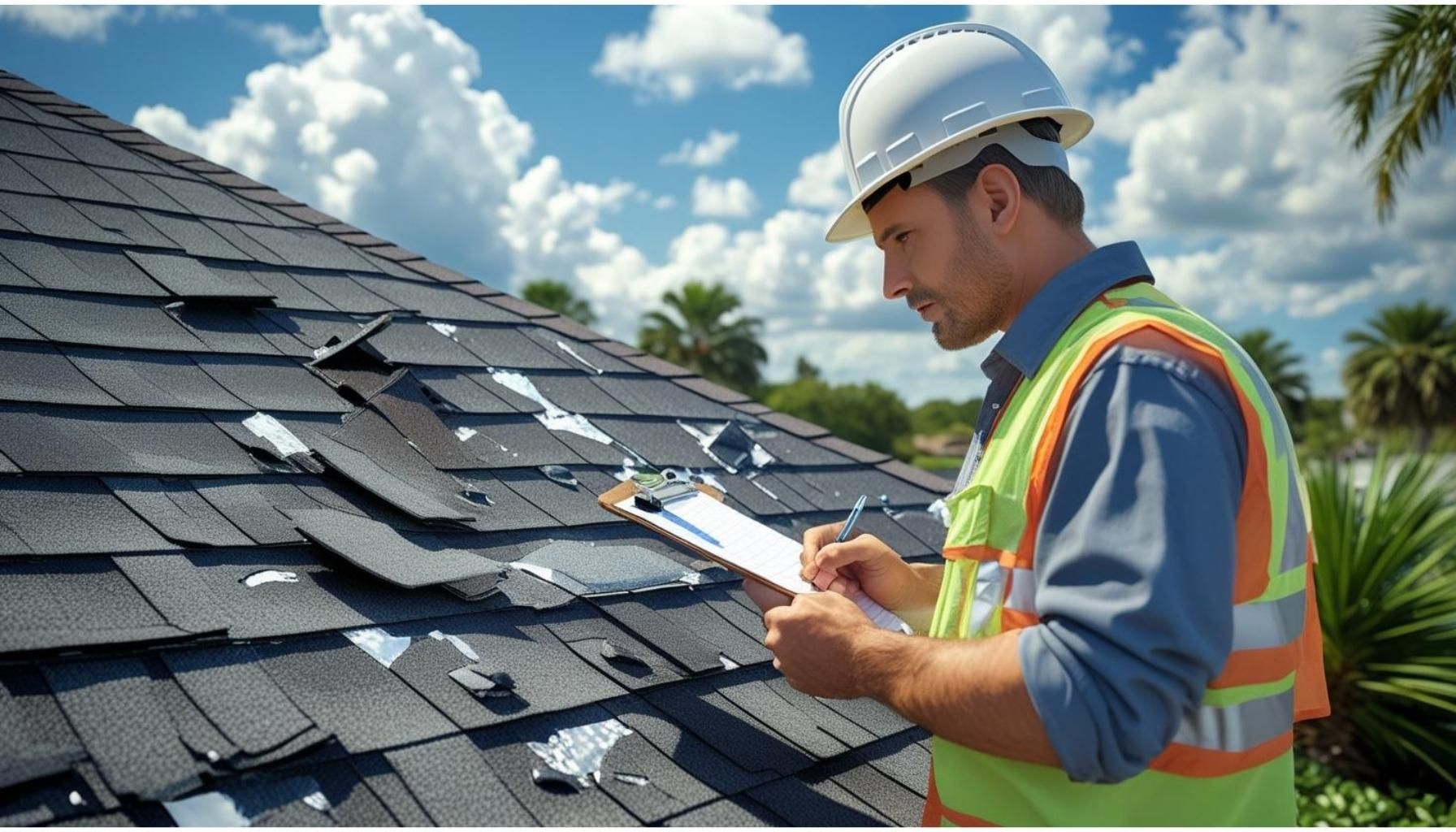
Filing an insurance claim after hail damages your roof requires careful documentation and timely action to maximize your coverage. We'll guide you through the claims process, from initial filing to working with adjusters and addressing common coverage challenges.
Filing Your Claim
Document all hail damage immediately after the storm passes. Take photos of damaged shingles, dents in metal surfaces, and granule accumulation in gutters. Capture wide-angle shots showing the overall affected area and close-ups highlighting specific damage points. Include a ruler or coin in photos to demonstrate hailstone size impact patterns.
Contact your insurance company within 24-48 hours of the storm. Provide your policy number, date of loss, and brief damage description. Request your claim number and adjuster assignment timeline. Most insurers assign claims within 3-5 business days during normal circumstances, though severe storms affecting multiple properties may extend this timeframe to 7-10 days.
Create a written inventory of all visible damage. Note damaged roof sections, affected gutters, broken skylights, and compromised vents. Include the storm date, approximate hail size, and duration of the event. Submit this documentation with your initial claim filing to establish a comprehensive damage record.
Protect your property from additional damage while awaiting the adjuster's inspection. Cover exposed areas with tarps and clear debris from gutters to prevent water backup. Save all receipts for emergency repairs, as insurers typically reimburse these costs up to $1,000-$2,500 under most standard policies.
Working with Insurance Adjusters
Schedule the inspection at a time when you can be present. Walk the property with the adjuster and point out all documented damage areas. Adjusters inspect an average of 8-12 properties daily, so active participation ensures thorough assessment of your specific damage.
Provide your adjuster with contractor estimates if you've obtained them. Professional roofing contractors often identify damage adjusters might miss, particularly hidden impacts affecting underlayment or decking. These estimates strengthen your claim by offering independent damage verification.
Request a copy of the adjuster's report immediately after the inspection. Review damage assessments, repair recommendations, and cost estimates carefully. Compare these findings with your documentation and contractor estimates to identify any discrepancies requiring clarification.
Challenge incomplete assessments through proper channels. Submit additional evidence within 10-15 days if the adjuster's report undervalues damage extent. Include supplementary photos, contractor findings, or engineering reports supporting your position. Insurance companies review 85% of supplemented claims and approve additional payments in 60% of cases.
Common Coverage Issues
Understand your deductible structure before filing. Standard homeowners policies apply percentage-based deductibles for wind and hail damage, typically 1-5% of your dwelling coverage. A $300,000 home with a 2% deductible requires you to pay the first $6,000 in repairs.
Review policy exclusions affecting hail damage claims. Cosmetic damage riders exclude coverage for dents that don't compromise roof function. These exclusions apply primarily to metal roofs where dents don't cause leaks. Approximately 30% of policies in hail-prone states include these limitations.
Address depreciation factors in claim settlements. Actual cash value policies subtract depreciation from repair costs based on roof age. A 15-year-old roof might receive 50-60% of replacement cost, while replacement cost coverage pays full repair expenses after you complete the work.
Recognize coverage limits for matching materials. Insurance covers damaged sections but may not pay to replace undamaged areas for aesthetic consistency. This issue affects 40% of partial roof replacement claims, particularly with discontinued shingle colors or styles. Negotiate matching coverage if visual inconsistency significantly impacts property value.
Repair vs. Replacement Options
After assessing hail damage on your roof, we face a critical decision between repair and replacement. The severity and extent of damage directly determine the most appropriate course of action for protecting your home and managing costs effectively.
Minor Damage Repairs
Repairs work best for isolated damage affecting small roof sections. We typically recommend repairs when fewer than 10 shingles show cracks or missing pieces across the entire roof surface. Individual asphalt shingle replacement costs $100-$350 per 10x10 foot area, making targeted repairs economical for localized issues.
Common repairable damage includes:
- Cracked shingles (1-5 pieces)
- Small granule loss patches
- Minor flashing dents
- Isolated missing shingles
Repairs work best for isolated damage affecting small roof sections. We typically recommend repairs when fewer than 10 shingles show cracks or missing pieces across the entire roof surface. Individual asphalt shingle replacement costs $100-$350 per 10x10 foot area, making targeted repairs economical for localized issues.
Professional roofers complete most minor repairs within 2-4 hours. They match existing shingle colors using manufacturer codes or weathered samples from protected roof areas. Repairs extend roof life by 5-10 years when damage affects less than 15% of total surface area.
Weather conditions affect repair timing. Asphalt shingles require temperatures above 40°F for proper sealing. We schedule repairs during dry periods to prevent water infiltration during work. Emergency tarping protects exposed areas until permanent repairs begin.
Preventing Future Hail Damage
Protecting your roof from future hail damage requires strategic planning and the right materials. We'll explore proven methods to strengthen your roof's defense against hail impacts and extend its lifespan through proper care.
Impact-Resistant Roofing Materials
Impact-resistant roofing materials provide superior protection against hail damage. These materials undergo testing through the UL 2218 classification system, which rates their resistance from Class 1 to Class 4. Class 4 materials withstand impacts from 2-inch diameter steel balls dropped from 20 feet without cracking.
Asphalt shingles with impact resistance contain modified polymers that absorb hail impacts better than standard shingles. Metal roofing systems offer excellent hail resistance, particularly steel and aluminum options with 24-gauge thickness or higher. Synthetic slate and composite tiles combine durability with lighter weight, making them ideal replacements for traditional clay or concrete tiles in hail-prone regions.
Rubberized underlayments add an extra protective layer beneath primary roofing materials. These underlayments seal around nail penetrations and absorb impact energy before it reaches the roof deck. Many impact-resistant products qualify for insurance premium discounts ranging from 5% to 35%, depending on your location and insurance provider.
Conclusion
Protecting your roof from hail damage requires vigilance and proactive measures. We've explored how different roofing materials respond to hail impacts and the steps needed to identify damage early. Remember that timely action after a storm can mean the difference between minor repairs and costly replacements.
Your roof's longevity depends on choosing the right materials for your climate and maintaining them properly. We recommend working with qualified professionals who understand local weather patterns and building codes. They'll help you select impact-resistant options that offer the best protection for your investment.
Take time now to review your insurance policy and understand your coverage limits. When the next storm hits you'll be prepared to act quickly and decisively. Keep our guide handy for reference and don't hesitate to seek professional help when needed. Your home's protection starts with a well-maintained roof that's ready to withstand whatever nature brings.
What are the main signs of hail damage on a roof?
The primary signs include dents and dings on metal components like gutters, cracked or missing shingles, and granule loss on asphalt shingles. Look for circular cracks, exposed mat areas, and fresh impact marks. Metal roofs may show cosmetic dents, while tile and slate roofs often display cracks or chips. Document any damage you find for insurance purposes.
How soon should I inspect my roof after a hailstorm?
Inspect your roof within 24-48 hours after a hailstorm. This timeframe allows you to document fresh damage before weather conditions potentially worsen it. Early inspection also helps meet insurance claim deadlines and prevents water damage from developing through compromised areas. Always prioritize safety and consider hiring a professional if you're uncomfortable with heights.
Which roofing materials are most vulnerable to hail damage?
Asphalt shingles are most vulnerable, covering 80% of U.S. homes. They crack easily and lose protective granules upon impact. Clay and concrete tiles can shatter, while wood shingles may split. Metal roofs resist penetration but can dent. Impact-resistant shingles and synthetic materials offer the best protection against hail damage.
When should I call a professional inspector instead of checking myself?
Call a professional when damage exceeds 10 impact marks per 100 square feet, for complex roof designs, or if you notice active leaks. Professional inspection is essential for claims over $5,000, as licensed inspectors provide detailed reports that strengthen your insurance claim. Emergency situations like extensive shingle loss also require immediate professional intervention.
How do I file an insurance claim for hail damage?
Contact your insurance company within 24-48 hours of the storm. Document all visible damage with photos and written descriptions. Schedule an adjuster inspection and be present during the assessment. Provide contractor estimates and create a detailed inventory of damages. Keep all receipts and maintain communication records throughout the claims process.
Should I repair or replace my hail-damaged roof?
Repair if damage affects less than 25% of your roof area and is limited to surface issues. Replace when damage exceeds 25%, affects structural components, or if your roof is near its life expectancy. Consider costs: repairs typically range from $500-$3,000, while full replacement costs $8,000-$25,000 depending on materials and size.
What are impact-resistant roofing materials?
Impact-resistant materials meet UL 2218 standards and include Class 3 or 4 rated shingles, metal roofing, and synthetic tiles. These materials withstand hail impacts better than standard options and may qualify for insurance discounts. Modified asphalt shingles with rubberized components and synthetic slate offer excellent protection while maintaining aesthetic appeal.
How can I prevent future hail damage to my roof?
Install impact-resistant roofing materials rated Class 3 or 4. Schedule biannual professional inspections and maintain your roof by removing debris, trimming overhanging branches, and fixing minor issues promptly. Document your roof's condition regularly and keep maintenance records. Consider upgrading to materials specifically designed for your region's typical hail patterns.
